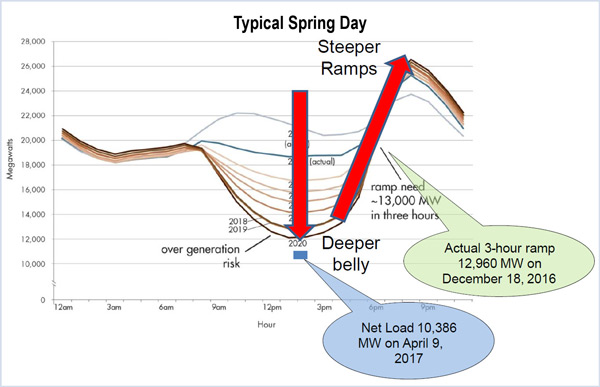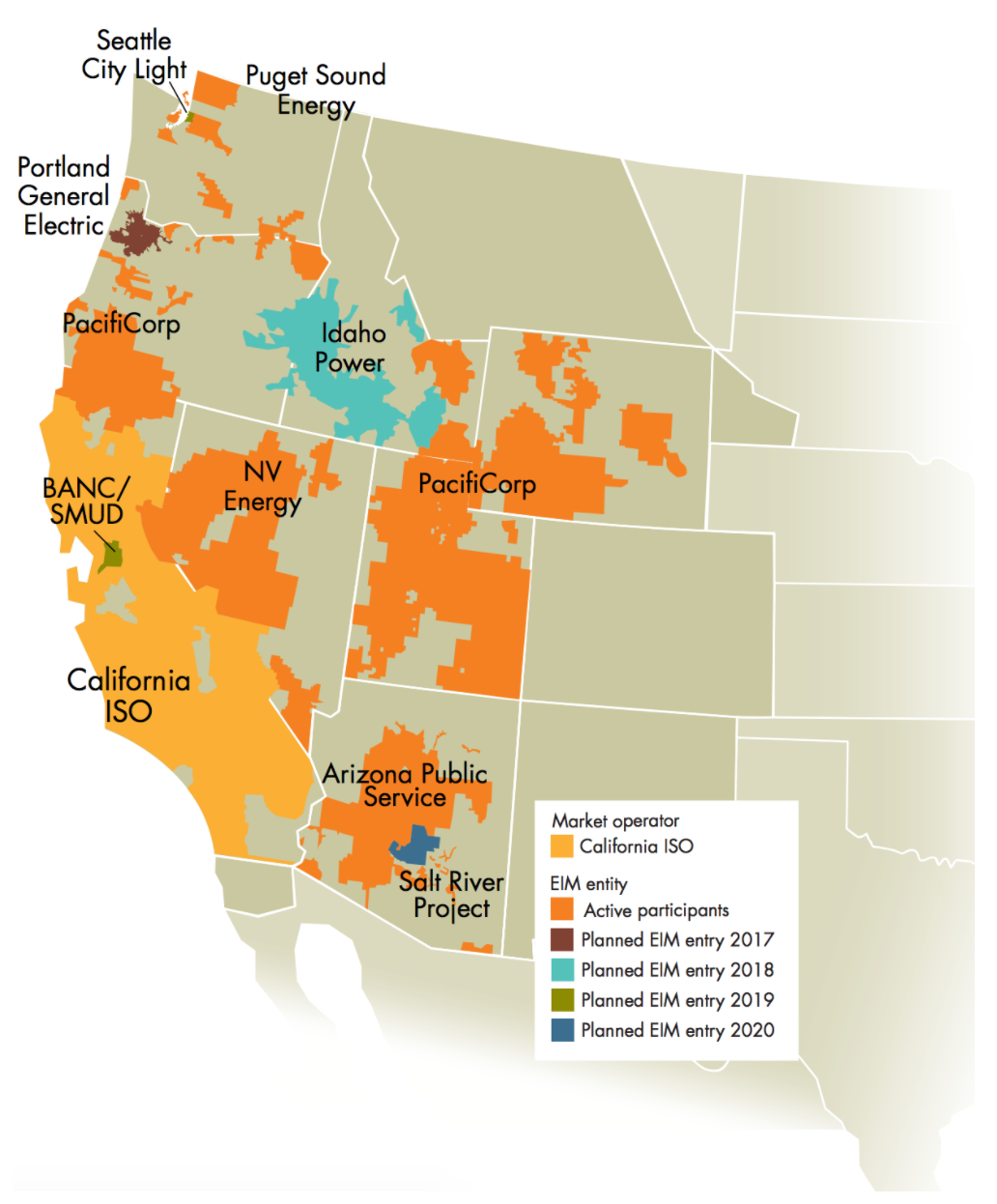As renewables come online, attempts to change consumer behavior remain
by Janis Kreilis
We had previously written about the downsides of having a lot of renewable energy generated at times when it is not used, and the latest data from the California ISO (CAISO) paint a picture that looks worse than previously thought.
According to Platts, CAISO had to curtail 80 GWh of renewable energy in March 2017, an amount roughly equal to powering 90,000 average American households for a month. Furthermore, curtailments have shot up by about 70 percent since last year; in March 2016, the figure stood at 47 GWh.
Since California has about 5 GW of rooftop solar capacity connected to its grid, afternoon ramps – the difference in electricity demand from the grid between midday and the moment people return home from work – have reached levels CAISO had anticipated for 2020.

Source: CAISO
The most commonly touted solution to this issue of wasting renewable energy has been the expansion of the Energy Imbalance Market (EIM). First of its kind in the Western United States, the market allows its participants to buy and sell energy needed to balance the grid on an ongoing basis. The EIM systems automatically select the lowest-cost energy sources in real time for immediate balancing needs and manage congestion on transmission lines.

Energy Imbalance Market. Source: CAISO.
The more utilities participate in the EIM, the higher the chance that some of them will be able to use the excess power generated on the CAISO grid. According to CAISO, the EIM was able to uptake nearly 24 GWh of renewable energy during the fourth quarter of 2016.
Another answer to this problem lies in technology, namely, storage. By being able to store the abundant energy generated by the solar panels during the day and using it in the afternoon, Californians could even out the load curve and make the job of CAISO much easier.
In 2013, California passed a landmark energy storage law (AB 2514) that requires the state’s three large investor-owned utilities to install 1,325 MW of energy storage. In April, the California Public Utilities Commission (CA PUC), based on AB 2868 signed in 2016, added another 500 MW of distributed storage to the requirement. Fulfilling these goals would set California apart as the leader in the nation in terms of energy storage, allowing other states to evaluate California’s experience.
California has also been among the pioneers in introducing time-of-use (TOU) rates – rates that vary according to the actual price of energy on the wholesale market and that are communicated to the consumers so that they can adjust their usage accordingly. In January, the CA PUC voted to adopt guidelines for setting TOU rates, which will help the state integrate an increasing share of renewables in the future.
Meanwhile, utilities in Texas are facing the flipside of the same problem. Texas leads the nation in wind generation (roughly 10 percent of its total) and also manages its own electricity grid and wholesale market through the Electric Reliability Council of Texas (ERCOT), which has limited connections to the neighboring grids.
The wind blows most strongly during the night, which coincides with the lowest levels of consumption, making it difficult for Texas utilities to balance the grid without cutting off some of the power. Their answer? Offer plans with free electricity during the night in an attempt to change their customers’ habits – cooking, running the dishwasher, or cooling the building are all free after 9 pm in some offers. And the more people shift their activities to the nighttime, the less demand remains during the daytime, eliminating the need for additional power plants since the peaks become flatter.
For now, the numbers of customers subscribing to such rates have remained rather low. However, once the trend takes off and there is a significant shift in the load on the grid, Texas will have valuable lessons to offer for other wind-rich states. Stay tuned.

